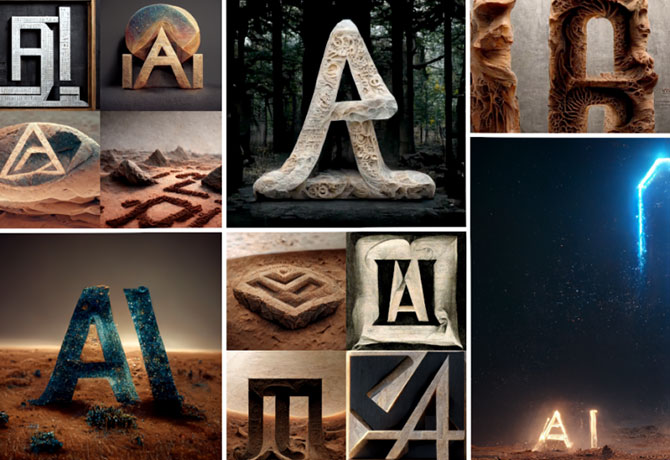Once the domain of science fiction, the rise of artificial intelligence is indeed very real, and very factual. AI, as it is succinctly called, has transcended the stuff of Hollywood and earned itself a rightful place in the business conversation.
Though not as scary as Hollywood makes it out to be, today’s AI is still quite self-aware and self-actualized. Defined by Wikipedia as “perceiving, synthesizing, and inferring information,” AI has become an ally beyond science – a tool that is powering a new generation of opportunity for both businesses and creative professionals.
In fact, a Deloitte study found that 94 percent of business leaders could not be successful without deploying AI within their business operations. Of course, we at Zimmerman agree. We see that impact here daily, where AI’s impact on our industry, inputs, and outputs cannot be understated.
“I think it’s happening at the right time,” said Chad Garcia, Chief Creative Officer of MINDTRIC, Zimmerman’s joint-venture creative studio. “It’s going to help you get to the seed of an idea faster, help you with efficiency, but it’s important to be efficient now because I think the industry as a whole is changing or has been.”
Among the tools that help Garcia’s team harness AI capabilities are Midjourney and DALL-E 2. The latter is being used to transform the bunny in MINDTRIC’s logo. The team is trying to identify what the personality of the bunny is by using DALL-E 2 and a few other AI tools to create imagery to start as a basis for their character. The ability to accelerate the creative process has been both remarkable and exciting for Garcia’s team, he says.

As an example of the full-fledged capabilities of DALL-E and other tools can be seen in work undertaken this year by Heinz. The venerable ketchup brand used DALL-E 2 to iterate dozens of images that resulted from prompts such as “ketchup bottle on table” or “impressionist style painting of a bottle of ketchup.” The Heinz team used the resulting images in a recent campaign with the tagline, “This is What Ketchup Looks Like to AI.” The campaign was a huge success and garnered a lot of attention online.
Heinz’s campaign is just one example of how agencies and creators have the potential to deploy these tools to save time, money, brainstorm ideas, and be more efficient.

Image Credit: Heinz
The proliferation of AI in business, media, and advertising has fanned the flames of expectations. It is seen as a way to seed an idea faster, be more efficient, and deliver on large content requests. Magazine Cosmopolitan just designed the first AI-designed magazine cover in collaboration with artificial intelligence research lab OpenAI, and digital artist Karen X. Cheng. The cover was designed using AI, in real-time, during a Zoom call. Those in attendance were shocked at how close to complete the design was.
“It’s hitting at an optimum time to allow us to deliver on large volume asks,” Garcia explains. “The ask is always going to get taller because we have a lot of buckets to fill, and efficiency is the absolute key.”
Garcia sees a future where AI doesn’t just make the ideation process more efficient, but also impacts the way creatives generate taglines, audio is created, and so much more.
For humans who wonder about the extent of AIs reach lies the million-dollar question: Does this new technology threaten the world of human-driven content creation? Potentially — both Harvard Business Review and AdAge have written stories on the balance between man and machine. They note that AI models for businesses are a great example of the potential value, but could have “substantial impacts on marketing, software, design, entertainment, and interpersonal communications….Not only will the technology potentially alter these industries but threaten jobs, and maybe even the sanctity of human creativity itself.”
Writer Gloria Liu, who was present for the Cosmopolitan cover demonstration, said she found the exercise more than a little shocking. “It raises a serious question far beyond the scope of a magazine design: about art, about ethics, and about our future,” Liu added.
However, it also can be argued that humans remain both the driving force – and chief beneficiary – of AI technologies, Garcia said.
“You can deliver a more dynamic product that caters to a specific, target audience, regional, neighborhood, and even specific person,” Garcia says. “AI allows for the ideation process or fleshing out of the visual so you can spend more time crafting.”

